How Do I Get Rid Of Carpet Moths & Carpet Moth Larvae? - 7 Steps To Carpet Moth Treatment

Carpet Moths can be persistent household pests and we strongly recommend a continual prevention regime. Warmer weather combined with centrally heated homes has led to carpet moth infestations becoming a year-round problem. The larvae cause the damage and carry on eating woolen and other natural fibers all year round. The adult moths are relatively harmless, other than their ability to increase the population of carpet moths dramatically if left unchecked!
Carpet moths inhabit less disturbed and darker areas - behind sofas, along skirting boards, under bookcases are typical hiding places for carpet moth larvae. Regular vacuuming in these areas, moving furniture and opening curtains in lesser-used rooms will all help to create a less desirable environment for carpet moths to settle and cause subsequent expensive damage.
We've helped thousands of customers deal with their moth problems effectively - with great pre- and post-sale support so that you're not alone, fast and secure delivery service, by giving you really clear instruction guides and ensuring that you have enough of the right products to deal with your moth infestation fast!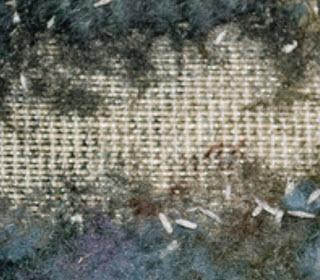
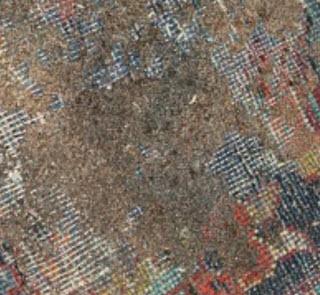
Getting Rid Of Carpet Moths
Here are the 7 steps to success:
- Identify Carpet Moths
- Assess the intensity of your Carpet Moth infestation
- Cleaning out where carpet moths live
- Reduce the breeding of carpet moths in your home
- Eradicating carpet moth eggs & carpet moth larvae
- Ongoing Regime
- Continue to monitor for Carpet Moths
If you are asking “how do I get rid of carpet moths?’ or 'how to get rid of moths in oriental rugs?' then we’ll assume you have seen some damage to carpets in your home.
Carpet moths have unfortunately been increasing across the USA over the last decade, invading homes and your personal possessions. This puts items you use everyday such as your invaluable carpets, rugs and clothing at risk of being permanently damaged - potentially having to be replaced. For many of you, some of these pieces may have been passed down from family or purchased as a one of a kind making them absolutely irreplaceable. Best to attack at the first sign of damage then to wait for a potential infestation.
If you waited and think you have an infestation, you might also see clothes and carpet moths cross over between closets and carpets - they are searching for natural animal fibers such as wool, cashmere and silk which contains the protein keratin - the natural food source for these types of moths. It is the larvae hatching from carpet moth larvae that do the damage; adult moths do not eat and have a very short lifespan - their only objective is to breed as fast as possible to perpetuate their species. To get rid of clothes moths we would advise purchasing clothes moth pheromone traps.
We hope that you find this guide useful - we have plenty more resources on this website to give you all the facts to tackle any carpet moth infestation and provide guidance on the right carpet moth treatment.
If you suspect a clothes moth infestation in your home, the number one thought should be, ACT FAST; clothes moths breed really rapidly and with a short lifecycle, you may be alarmed at how quickly they multiply. We suggest using clothes moth traps immediately.
Step 1 - Identify the Carpet Moths
The webbing clothes moth, otherwise known as the common clothes moth, is prolific across the US and is the most likely carpet moth you will find, followed by the case-bearing clothes moth which attack carpets and clothes. Brown house moths and white-shouldered moths are less common but potentially equally damaging to your carpets and rugs.
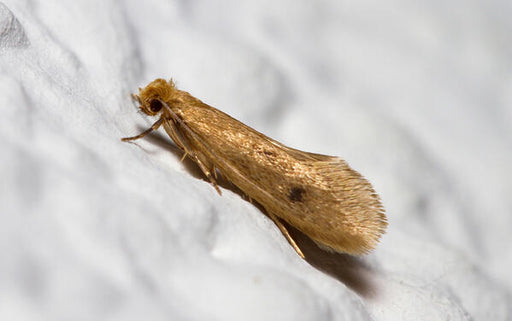
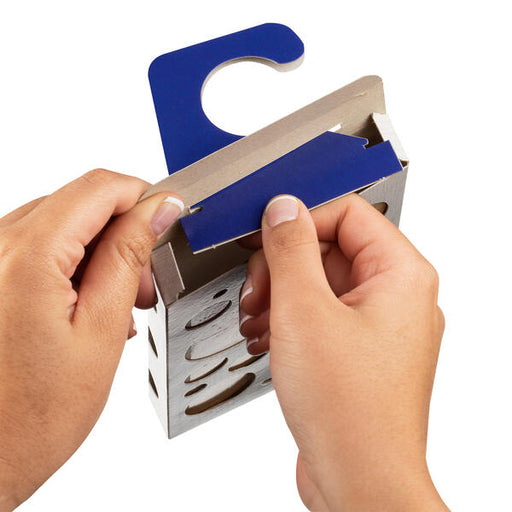
You may see case bearing moths in a state of pupation, often attaching themselves to walls in darker areas, near their source of food, i.e. your natural carpets! They may be found in carpeted closets, behind bedroom furniture, under sofas, behind TV units, and many other similar places.
You may see carpet moth larvae - they are around ¼ to ½ inch long, cream in color with a darker head. You are unlikely to easily see carpet moth eggs which are white or cream in color and usually fall into the weave or pile of carpets.
It is important to distinguish between carpet moths and pantry moths - they are attracted to very different pheromones / moth traps. It is not likely that you will find pantry moths in your bedrooms but in living areas you may have one or both types, especially if close to kitchen areas with stored dried food. Pantry moth larvae will not eat your carpets and oriental rugs, but may be seen as they try to locate. In which case, you can try our pantry moth traps to get rid of them.
See the moth identification guides on this site for more information.
Step 2 - Assess the intensity of your carpet moth infestation
Use Carpet Moth Traps to identify how much of a problem you may have - unlike many other types of moths, carpet moths prefer dark, undisturbed places (under sofas, close to baseboards and in corners of your living room) and you will most likely need carpet moth traps to assess the level of infestation you are really facing. You are looking for irregular holes in thinner textiles, or reduced pile on carpets. In a severe case that has been undetected for some time, the carpet may be threadbare as shown in the below picture.

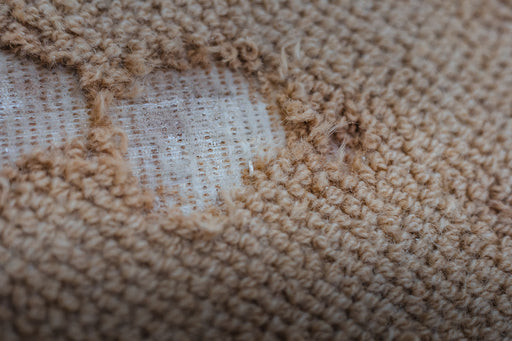
Moth traps also only catch the adult active male moths by using the female pheromone to attract them. They help to contain growth in numbers of the carpet moths in your home by helping remove the male moths from the breeding cycle.
Inspect likely areas for potential damage to carpets. Edges of rooms and along baseboards, under and behind furniture, in corners and behind floor length curtains are all potential ‘hotspots’ for carpet moth activity. Look for damaged or threadbare (in extreme cases) carpets, and damage to other natural furniture and curtain fabrics. Be aware of potential crossover between carpets and bedroom furniture such as closets and dressers.
Carpet moths will not lay eggs in highly trafficked areas of your carpets such as the middle of rooms, nor where you regularly vacuum. They’ll look for darker, undisturbed and dusty spots to lay their eggs to provide the larvae with plentiful food supply and maximize the chances of survival through the lifecycle to adult carpet moth.
Step 3 - Cleaning out where carpet moths live
Dust is likely to attract clothes moths and carpet moths - dust has a high content of human hair, pet hair and the skin cells that we shed every day - keratin included!
Do you vacuum under furniture, behind doors and closely along baseboards regularly? Do you clean and dust your furniture regularly? Do you ever take out your throws and rugs to shake and air them?
There are clues here in answering “how do I stop moths eating my carpets?”. A regular and thorough cleaning program will help with the risk of a carpet moth larvae infestation.
Lastly, when vacuuming, empty your vacuum cleaner outside into a bag that is then tied tight and disposed of in the trash to avoid the risk of any carpet moth eggs and or larvae remaining in the home.
Step 4 - Reduce the breeding of carpet moths in your home
Use carpet moth traps to reduce the population growth - if you get the right carpet moth traps and act fast then you MIGHT stop them from laying eggs on your carpets. At the very least you will contain the problem and reduce the amount of damage to carpets and other home textiles, as well as your clothes.
Remember, it is the carpet moth larvae that hatch from the eggs that do the damage to your clothes - adult flying clothes moths do not eat, but if they are able to mate, the females then lay hundreds of eggs in their short lifetime. Eggs hatch into larvae and larvae pupate into carpet moths.
Depending on temperatures and humidity conditions, carpet moth larvae can live for up to nearly 3 years (eating your home textiles!) - that’s for colder climates. In warmer areas they can go from egg to pupation into adults in little over a month. Either way, given its the larvae that do the damage, your carpets will NOT be safe if carpet moth larvae are present in your home.
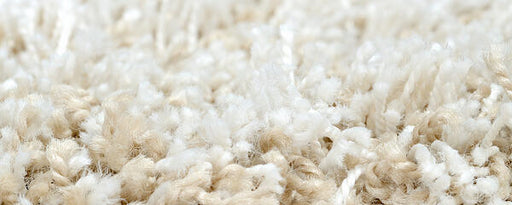
Step 5 - Eradicating Carpet Moth Eggs and Carpet Moth Larvae
Carpet moth larvae only eat Keratin - the protein in natural animal based fibers - they will NOT eat cotton and synthetic fabrics unless they are heavily soiled in food or sweat. Look for signs of damage in woolens, silk and any feather, fur or soft leather items. Sadly the most expensive items of home textiles and furnishings, and the softest materials, will be at greatest risk - think wool carpets, fur throws or rugs, wool or cashmere throws, silk curtains, wool or leather sofas.
You are unlikely to easily spot the eggs - they are tiny, but you may see some larvae before they pupate and turn into adult moths. See our carpet moth identification guide for more information. You may also see some very fine sticky webbing in carpets.
If, after cleaning and using Moth Traps, you find that the problem persists you may like to read our Carpet Moths Kit Guide for information on how to use chemical products in line with our Traps to rid your home of Carpet Moths.
Step 6 - Ongoing Regime
Human and pet hair, dust, sweat and food stains will attract moths to your carpets - regular cleaning is essential.
Carpets and curtains should be periodically deep cleaned - the build up of dust over the course of the year can be considerable even if not immediately visible.
Remove sofa cushions and clean underneath - you’ll be surprised what else you may find there, especially if you have children and pets at home!
All removable covers, curtains and other loose items should be taken outside and shaken before taking the next step. This also gives you empty space to thoroughly vacuum, dust and, if necessary, apply specialist treatments to high risk areas described above.
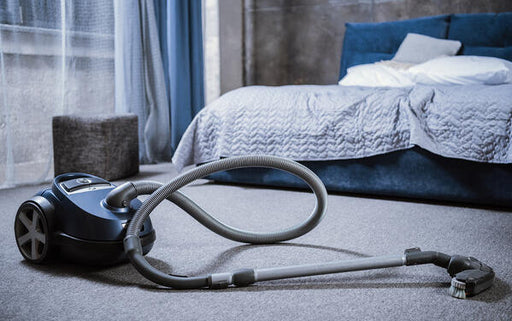
Step 7 - Continue to monitor for Carpet Moths
Position Carpet Moth Traps in order to monitor for any future activity and to help break the breeding cycle if adult carpet moths return - they attract the active males through emitting the female pheromone.
This may seem like a lot of effort, but any ‘cut corners’ will present an opportunity for a repeat carpet moth infestation. Carpet moths are very persistent pests and given their very small size, only thorough routines as outlined above will ensure their full eradication.
Doing it yourself will also save a significant sum in minimizing damage to your property and compared with using professional pest controllers who will do one visit and not repeat treatments without additional fees!
Prevention is better than a cure! Be vigilant
If you have suffered damage, you may want to keep carpet and tapestry moth traps in place throughout the season (March to November) to monitor their potential presence. In warmer Southern States from Florida across to Texas and then to California, carpet moths are often a year-round problem.
MothPrevention Moth Traps attract BOTH male Clothes Moths and Carpet Moths
Many of the traps on the market use an ineffective Chinese pheromone better suited to pantry moths. If you buy from Amazon, beware of fake product reviews on many of the less common brands, and make sure you research thoroughly before buying - the longer you leave it before finding the right clothes moth traps that really work, the more time the clothes moths in your home have to proliferate.
Lastly, remember that moths found in your carpets can easily transfer to your closets in search of soft natural animal fibres to lay their eggs - if you have had an issue with carpet moths, it is especially important to carefully check your closets and dressers for evidence of moth damage. If this is the case you can find out more about clothes moth prevention.
Don't forget to watch out for clothes moth larvae as well!
We hope this article has answered the question “How do I get rid of Carpet Moths and Carpet Moth Larvae?” - it may feel like a lot of work to do this thoroughly, and some expense, but it will save your valuable carpets and home textiles from being a complete loss, not to mention giving you back your peace of mind.
FAQ
1. How to get rid of moths in oriental rugs?
Carpet Moth Larvae feed on natural fibers, such as wool and silk. This means that your Oriental Rug is the perfect breeding ground for them! You can not get rid of larvae or eggs in an oriental rug by simply turning down the heating or trying to reduce the humidity in the room. Thorough cleaning, using Traps, and monitoring is the best way to start.
If cleaning and the use of natural products does not prove effective there are pesticide based kits that you can purchase that won’t damage your oriental rug. Read our Carpet Moths Kit Guide for more information.
2. How do I get rid of moths in my wool rug?
Removing moths from a wool rug, be it new or an antique oriental rug, can be difficult. The first thing you need to do is to determine the area of infestation. If the infestation hasn’t yet ruined your wool rug you can carefully clean and vacuum the area. This will remove eggs, larvae, and any debris from the rug. Turning down the heating in your home and using a dehumidifier can help in some cases
Use natural moth repellents, such as cedar, lavender, rosemary, and thyme. Position sticky Moth Traps to attract the sexually active male moths, taking care not to place them near your repellents.
3. Does carpet cleaning get rid of moths?
Regular carpet cleaning does not always get rid of moths completely. For example, while carpet cleaning can kill eggs and larvae, adult moths might still be flying around and lay more eggs at a later date. There could also be eggs present on other items of furniture. Since antique and oriental rugs can be damaged by high heat, you will need to be careful if attempting to clean them yourself, or you might consider a professional cleaning service that specializes in textiles and antique fabrics.
Some carpet cleaning companies will have a special service for exterminating carpet moths. It’s always a good idea to call around and see what’s available in your region. That said, regular cleaning, vacuuming, and steam carpet cleaning can reduce the number of pests dwelling in your carpet.
4. How do I get rid of Carpet Moths permanently?
Getting rid of Carpet Moths permanently is going to take some time. You will need to clean, vacuum, and may need to routinely use repellents or moth killing sprays. You can purchase carpet moth pheromone traps from MothPrevention to start reducing the presence of the male moths and therefore help break the breeding cycle.
It may be necessary to repeat the process several times to remove all moths from your home, but with time and effort it can be achieved.
5. What attracts Carpet Moths the most?
Like most House Moths, Carpet Moths are attracted to the protein in natural fibers, such as wool,silk, hair,animal fur, as well as traces of food, moisture, and perspiration. A carpet often has all these things, making it the ideal environment for Carpet Moth Larvae to feast, thrive, and grow.
6. Do Carpet Moths live in synthetic carpets?
Although it’s considered rare for Carpet Moths to live in a synthetic carpet, it does happen. Unlike oriental rugs that are made from wool, synthetic carpets don’t contain the natural fibers the Carpet Moth Larvae need to grow. However, if there is a large presence of animal fur, human hair, dust and crumbs, that could attract adult moths to lay their eggs nearby.
7. How do Carpet Moths get in the house?
If you want to know how to get rid of moths in an oriental rug, you need to first consider how they got there. Adult Carpet Moths will fly in through doors, windows, or cracks. If you picked up an oriental rug from a flea market, it might have already been infested with Carpet Moth eggs without you knowing. Secondhand items, such as carpets, oriental rugs, and furniture are the perfect environment for Carpet Moths.
Keep in mind that Carpet Moth eggs and larvae are very small, so you might not notice them during your purchase or even when the eggs first hatch. advise a thorough clean, or a professional clean before you bring your new oriental rug into your home.
About MothPrevention
MothPrevention® speak to customers every day about their clothes moth issues - clothes moths are a species that are ever increasing and that can cause significant damage to clothes, carpets and other home textiles.
To date, we’ve helped over 150,000 customers deal with their moth problems. We have developed professional grade solutions including proprietary pheromones, not available from anybody else in the USA, and engineered in Germany to the highest production standards.





